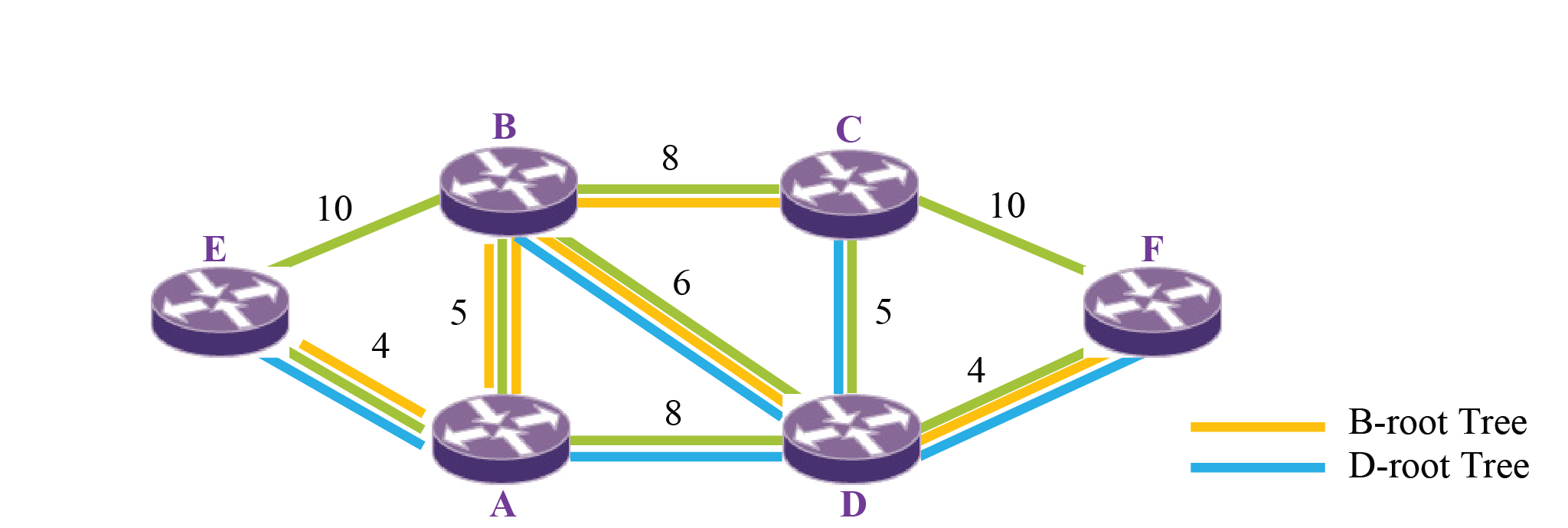Distribution tree nicknames may be configured or auto-generated. Configured distribution tree nicknames always have priority over auto-generated nicknames. So as to minimize nickname collisions, RBridges attempt to reuse auto generated nicknames across system restarts. If multiple distribution trees are maintained within the TRILL network, by default the ingress RBridge forwards flood traffic to the tree whose root is least cost from itself.
The figure below shows how trees are determined and used. In the network example, all of the RBridges advertise the number of trees to compute is four. They also advertise the number of trees to use as two. Each RBridge also advertises that it wants all of the other RBridges to compute a tree with itself as the root. Thus, the total number of potential trees is six. The tree priorities are set in the following order from highest to lowest priority: B, D, A, C, E, and then F. Thus, all RBridges compute four trees with an RBridge root of B, D, A, and C. But all RBridges will forward using only the tree rooted at RBridge B or D. If RBridge E needed to flood a packet, it would choose the distribution tree rooted at RBridge B‘s nickname as the egress RBridge nickname. Similarly, RBridge A would also flood packets using the tree rooted at RBridge B. RBridge C on the other hand would choose the tree rooted at RBridge D.

Trees are bidirectional and transit nodes must only forward to next-hop RBridges that are represented in the tree. except for the RBridge from which the packet was received. Reverse Path Forwarding is recommended as a loop avoidance mechanism and to provide network security from spoofing attacks.

 Print
this page
Print
this page Email this topic
Email this topic Feedback
Feedback